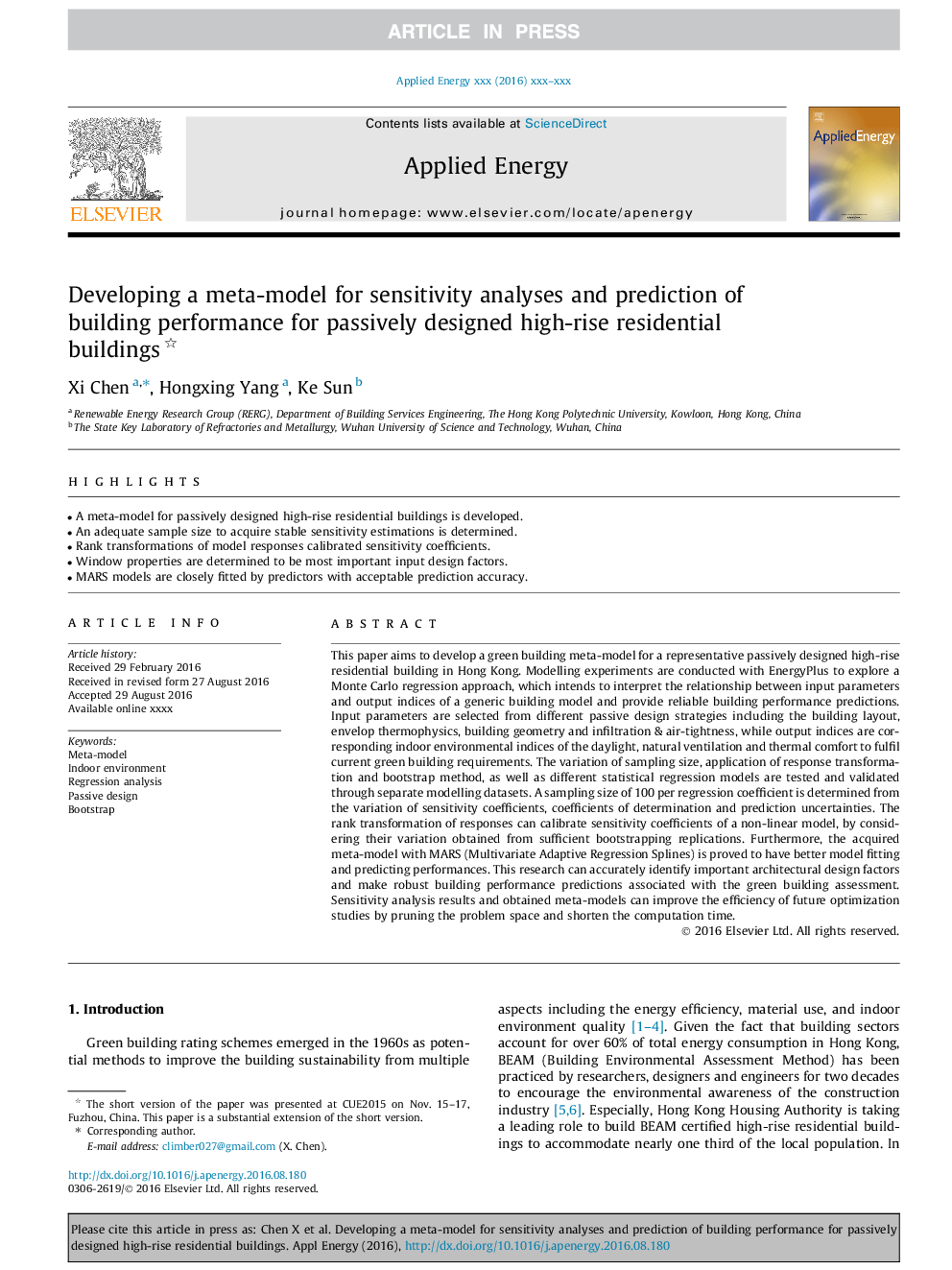| Article ID | Journal | Published Year | Pages | File Type |
|---|---|---|---|---|
| 4916368 | Applied Energy | 2017 | 18 Pages |
Abstract
This paper aims to develop a green building meta-model for a representative passively designed high-rise residential building in Hong Kong. Modelling experiments are conducted with EnergyPlus to explore a Monte Carlo regression approach, which intends to interpret the relationship between input parameters and output indices of a generic building model and provide reliable building performance predictions. Input parameters are selected from different passive design strategies including the building layout, envelop thermophysics, building geometry and infiltration & air-tightness, while output indices are corresponding indoor environmental indices of the daylight, natural ventilation and thermal comfort to fulfil current green building requirements. The variation of sampling size, application of response transformation and bootstrap method, as well as different statistical regression models are tested and validated through separate modelling datasets. A sampling size of 100 per regression coefficient is determined from the variation of sensitivity coefficients, coefficients of determination and prediction uncertainties. The rank transformation of responses can calibrate sensitivity coefficients of a non-linear model, by considering their variation obtained from sufficient bootstrapping replications. Furthermore, the acquired meta-model with MARS (Multivariate Adaptive Regression Splines) is proved to have better model fitting and predicting performances. This research can accurately identify important architectural design factors and make robust building performance predictions associated with the green building assessment. Sensitivity analysis results and obtained meta-models can improve the efficiency of future optimization studies by pruning the problem space and shorten the computation time.
Related Topics
Physical Sciences and Engineering
Energy
Energy Engineering and Power Technology
Authors
Xi Chen, Hongxing Yang, Ke Sun,
